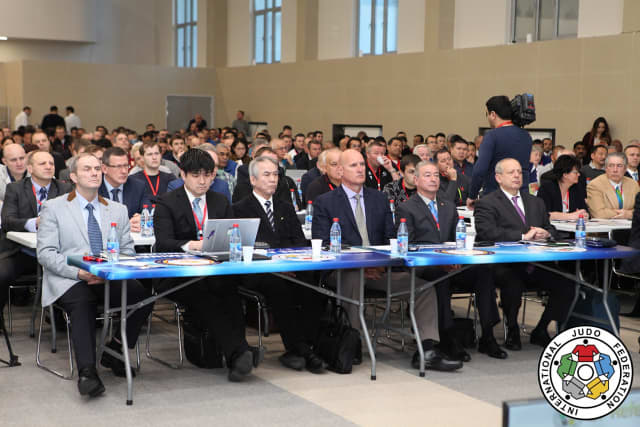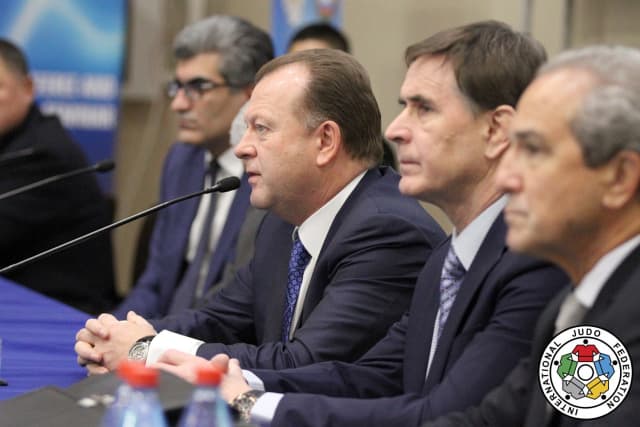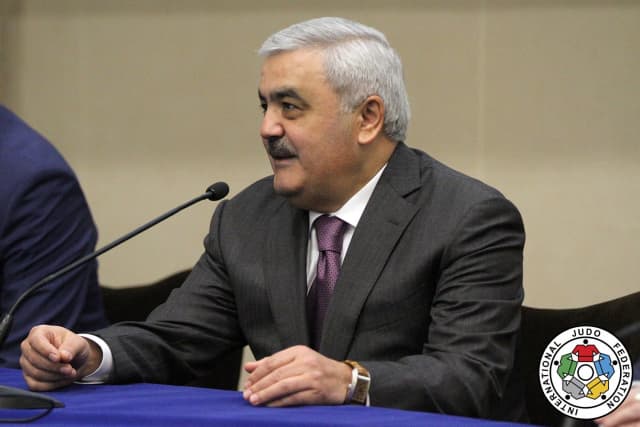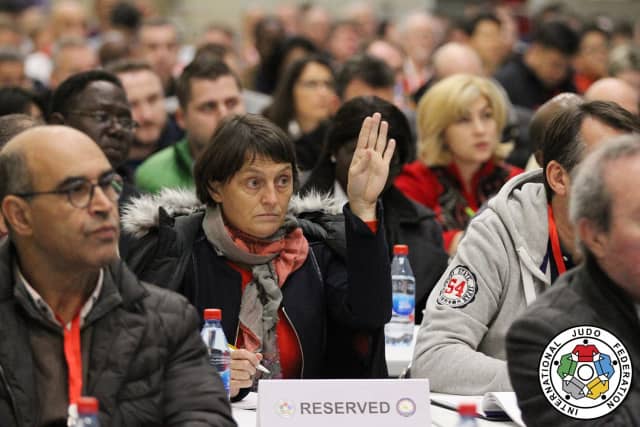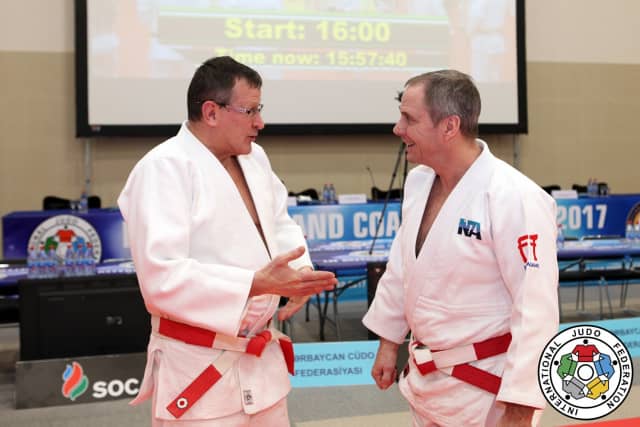The International Judo Federation has acted quickly post-Rio
2016 to build on the momentum of the IJF World Judo Tour and the hugely
successful London 2012 Olympics and Brazil’s triumphant first Olympiad.
An adapted set of rules (which will be trialled from January
– August) was announced in December, following key meetings between the IJF
Executive Committee – who were joined by media representatives – in Abu Dhabi
and Tokyo, to drive the sport forward and make judo more dynamic and understandable
and accessible to non-judo fans.
The two-day seminar, which was streamed live on the IJF
YouTube channel and held at the IJF Baku Grand Slam venue (Heydar Aliyev Sport
Palace), attracted 365 representatives from 98 nations. The coaches and
referees will themselves present the new rules to their peers and national
teams upon their return home to disseminate a uniform landscape and understanding
ahead of new season.
Day one opened with a theoretical session on Friday morning
as the adapted rules were outlined by IJF Head Referee Director Juan Carlos
Barcos.
In the afternoon IJF Hall of Famer Neil Adams led the
practical session on the tatami alongside former world champion and current IJF
Sports Director Daniel Lascau. In addition to the aforementioned, a smorgasbord
of legends shared the tatami including Olympic champions Yamashita Yasuhiro,
IJF Development Director, Ki-young Jeon, IJF Sport Commissioner, Hosokawa
Shinji, IJF Education and Coaching Commissioner, Inoue Kosei, Japan head coach,
Kawaguchi Takao, IJF Referee Commissioner, and Giuseppe Maddaloni, Italian
national coach turned IJF Fast Track Refereeing Programme member.
Saturday saw a resumption of the technical analysis before a
presentation of coach training opportunities and the Olympic solidary scheme by
Mohamed Meridja, IJF Education and Coaching Director. IBSA Judo, the
International Blind Sports Federation, who signed a second and expanded MoU
with the IJF in 2016, presented their rules and their plans to implement the
new IJF rules while retaining their specific nuances for visually impaired and
deaf judoka. A final theory session reviewed several scenarios as 150 clips
were presented to show situations such as pushing out, bridging, waki-gatame,
ne-waza or tachi-waza, waza-ari or ippon.
Mr. Marius Vizer, IJF President, was present in Baku and at
sessions on both days while also hosting a live Twitter Q&A session on
Saturday evening.
Mr. Vizer said: “Dear Mr. President, dear judo family
members and colleagues, I wish you all a Happy New Year and wish you all a lot
of success in 2017.
“We had a successful 2016 which had a lot of positives and
we are now in a moment when all judo the world, including media and sponsors,
are expecting us to take the next steps. All IJF projects developed from 2009
will be visible to all sectors this year.
“When we speak about changes, they not just impact the
referees, coaches and judoka but also media, development projects, finances and
the global development of judo. The changes will be major changes. We do this
to open judo more to the public and to be an open sport to the entire world.
“Previously amendments to the rules have been met with some
negativity because some individuals have a conservative mentality. Today we
have different comments and attitudes. We have a different community who
appreciates our vision and creativity.
“We will make an evaluation of the rule changes after the World
Championships 2017 in Budapest. If there is something very significant then we
will analyse it and make the necessary changes. The IJF strategy is based on
the proposals of all national federation’s, continental unions, the IJF
Executive Committee, to continue the growth of judo.
“Next year Baku will host the 2018 World Championships and I
want to thank the Azerbaijan Judo Federation, and SOCAR, for their great support
and for staging a very successful seminar.”
Mr. Rovnag Abdullayev, Azerbaijan Judo Federation President,
said: “Dear Mr. Vizer, dear judo family members, I wish you all a Happy New Year.
Judo is one of the most popular sports in the world. We are very proud to have
hosted this seminar – which is key to the future of judo – in Baku.
“We currently have three Azerbaijan judoka who are world
number ones and we are proud of our athletes and our contribution to this
sport. It has been a pleasure to see you all here and I hope you have enjoyed
our country.
“I thank Mr. Vizer for his support and for organising this event in Azerbaijan. I wish you all a wonderful year and hope to see you in March at the Baku Grand Slam 2017.”
IJF Hall of Famer Neil Adams led the practical session
alongside former world champion and current IJF Sports Director Daniel Lascau.
Adams, who received the IJF Expert award in December at the
Tokyo Grand Slam, demonstrated examples of the new changes with an emphasis on
the kumi-kata.
The double Olympic silver medallist said: “The new rules are
a culmination of our research of the last Olympic cycle and create a path for judo
to be more dynamic. I believe these changes will lead to less shidos, more
ippons and overall a more positive presentation of our sport.
“I was pleased with the reaction of the coaches and referees
to what was delivered. Coaches need to have a positive approach to the changes
to enable their athletes to quickly adapt to them and show their best judo. The
kumi-kata will be vital with the loosening of the gripping restrictions and judoka
now have more freedom to engineer attacks and that will be very interesting to
follow in this trial period for the rules.
“I feel that the seminar was very successful and I look
forward to seeing the progression of our sport on the IJF World Judo Tour this
year and in the next Olympic cycle.”
Watch the new rules in effect at the Paris Grand Slam 2017 from 11 – 12 February, the opening event of the IJF World Judo Tour 2017, live and free at www.ippon.tv #JudoParis2017


